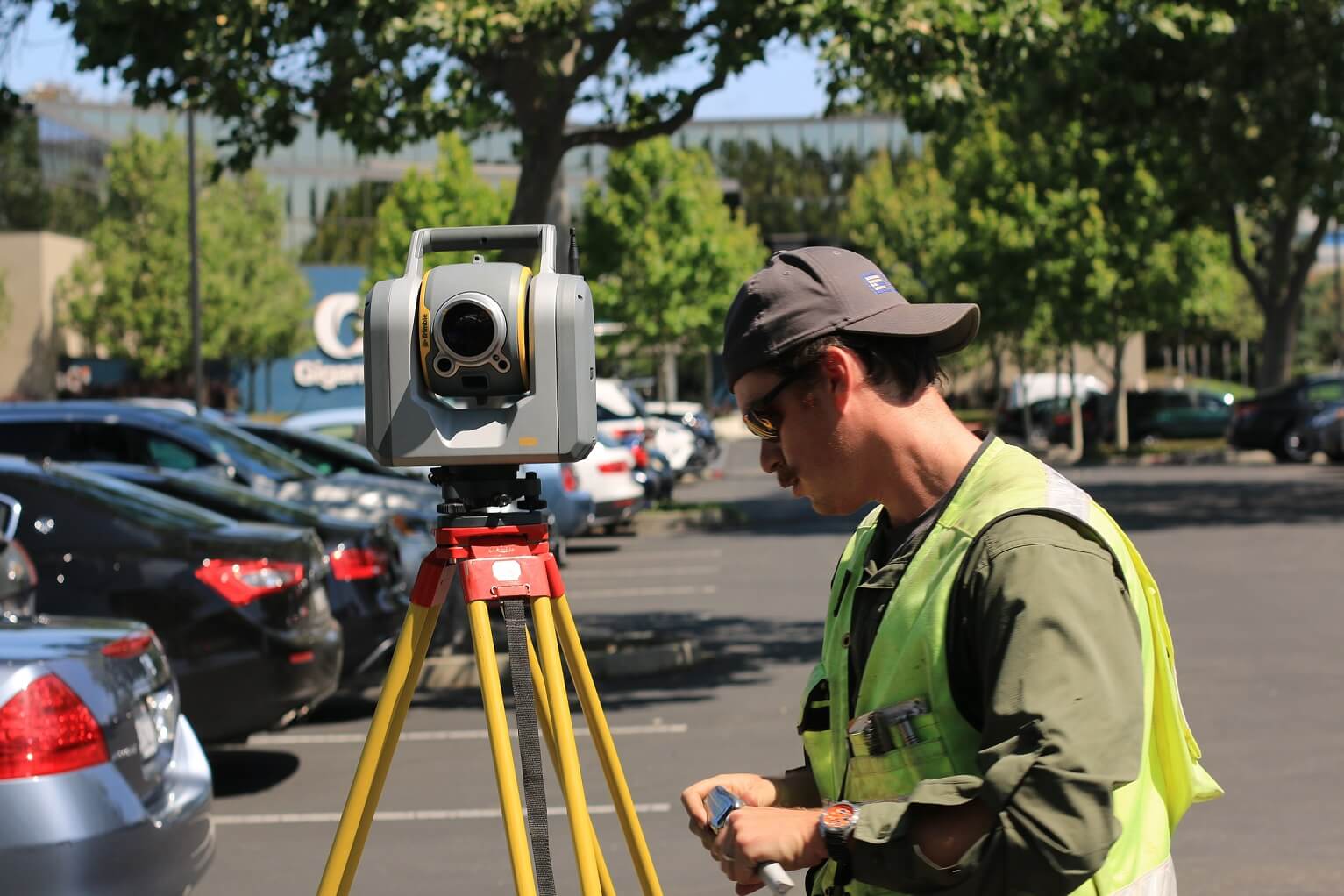What is the Job of a Land Surveyor?

If you consider yourself a problem-solving ninja, are strong with technology, have a good foundation of mathematics and science, and enjoy working outdoors, you’ll find a career in land surveying appealing. Land surveyors are a vital component to the growth and development of cities, states and countries across the globe.
They are responsible for measuring and mapping the geographic landscape where construction projects and other development are built. Land surveyors use modern digital technology along with old-age civil engineering to provide a foundation of information that helps develop roads, buildings, and infrastructure.
Land surveying is one of the most misunderstood careers but is arguably one of the most important within the construction and development world. Surveyors are used for multiple tasks, ranging from assessing landscape or terrain for new construction projects, to measuring the slope of existing roads or elevation of homes for upgrades in infrastructure. Like most of today’s engineers, they use speciality equipment that helps them provide precise measurements, that are vital to ensure consistent and safe development of many common construction-related projects.
Why is Land Surveying an Important Career?
Every highway, city road, and land development project completed in Australia and abroad begins with a professional land surveying project. This career is one of the most important in the development of any new construction or infrastructure project. Without the experience of land surveyors, building new roads with proper drainage to avoid flooding or buildings that are perfectly flat, and level would not be possible. Today’s land surveyor works with geologists, architects, government agencies, engineers and builders to provide valuable data needed to begin any new construction project.
What Skills Are Needed?
To be a successful land surveyor, a candidate must possess the following skills.
- Understanding and comprehension of computer-aided design (CAD) programs and surveying technology.
- Exceptional technology, science, mathematics, and engineering skills.
- Creative problem solving and analytic skills.
- Comprehension of safety and health standards along with environmental regulations for the area in which they are licensed to practice.
- Time management skills
- Team working ability and the ability to self-manage.
Understanding the Types of Land Surveyors and Job Tasks
Land surveyors working in the residential sector are used in the development of subdivision, home construction, or re-establishing property boundaries. They are also tasked to assess the layout of the land to ensure residential property construction projects comply with local regulations and guidelines.
Land surveyors in the commercial industry are utilised for infrastructure or new commercial building development projects including new roads, bridges, highways, waterways, large strata developments, shopping centres, high rise buildings, and commercial construction projects. Most government improvement projects for improving infrastructure begins with complete land surveying.
Practical examples of land surveyor projects in these two segments include:
- When you are planning on renovating a residential property, a surveyor will be employed to work with an architect to measure any elevations or undeveloped property.
- Anytime a homeowner is building fences or development approaching their property line, a residential land surveyor is hired to ensure the construction is within their official property line.
- If land is sub-divided into individual plots, the surveyor will accurately mark and document where the boarders exist.
- If a boundary issue with neighbours exist, a land surveyor will be hired to settle the dispute.
- To determine compliance with city or county zoning or policies, surveyors are retained.
Working Conditions and Environment
Those who enjoy working outdoors are well-suited to seek a career in land surveying. Most of the work will be completed in outdoor environments, being exposed to the elements that can range from 100+ degree heat to below freezing temperatures. The task of land surveying involves mapping out heights, distances, slopes, and all geographic obstructions that may impact the lay of the land. Most surveying projects that require physical outdoor inspections are completed when weather is clear, as weather can cause some fluctuation in reporting. Once measurements and onsite work has been completed outdoors, reports and additional tasks are often completed in an office.
Government
The third segment that depends on land surveyors is government agencies. This includes city, county, state, and federal agencies. Government land surveyors are used for federally or government funded construction projects, including infrastructure such as highways, bridges, waterways, dams, powerplants, and government development projects.
There are many benefits and drawbacks to working in the residential, commercial, and government segments as a land surveyor. Regardless of the segment, most land surveyors will use the same type of professional equipment, training techniques, and require the same level of education. Depending on the location or type of employment, some surveying positions require additional certifications or licensing to comply with local, state, or federal regulations.
This career is one that will always be needed, as long as construction or infrastructure development continues across the globe. Most countries use land surveyors in their residential, commercial, and government development projects, and in most instances, certifications and licenses may transfer between different cities, counties, and states.
Insurance for land surveyor options are also available through BizCover, including professional indemnity insurance.
This information is general only and does not take into account your objectives, financial situation or needs. It should not be relied upon as advice. As with any insurance, cover will be subject to the terms, conditions and exclusions contained in the policy wording. © 2025 BizCover Limited.





